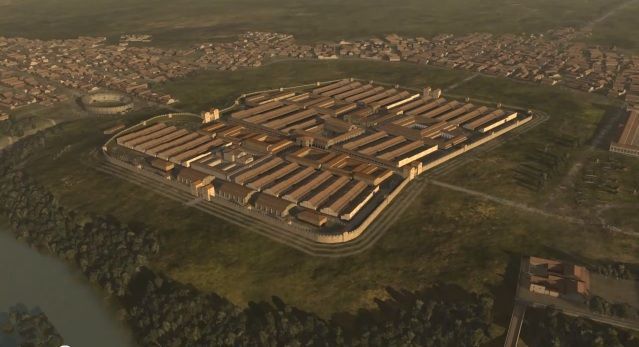Chapters
There was no presence/presence of Romans in Poland itself. ultimately – apart from excavations in the vicinity of Kietrz, no hard evidence was found of the permanent presence of the Romans in today’s Poland. Merchants on the amber route, yes – but cities, garrisons – no. Not many people know that such places are quite close to Polish borders. Here are the five cities of Ancient Rome that were closest to the modern Polish borders.
CARNUNTUM AND VINDOBONA – Austria
In Vienna, in one of the central squares (Michaleplatz) close to the Empress Sissi Museum, we find the remains of the Roman Vindobona – a large civilian city, one of several limes, which is the border on the Danube. It is in this city that the modern Old Town of Vienna was built. A little further east, in the vicinity of Petronel, there are the impressive remains of the Roman military camp and the town of Carnuntum. It is said that Marcus Aurelius stayed here before his death. In Carnuntum you will see two amphitheatres, the remains of Roman baths, houses, streets. Historical picnics from Roman times are often organized here.
LAUGARICIO AND KALEMANTIA – Slovakia
Suffice it to say that in the suburbs of Bratislava – Dubravka and Devina, traces of the Romans have been found (and most visible in Gerulata), the closest place of this type is Trencin, where there was a military settlement Laugaricio, somewhere even on maps Ptolemy. To this day, only the inscription carved in the rock under the castle has survived, praising the victories over the Germans, which were fought in Slovakia during the Marcomannian Wars. The permanent military camp was Kalemantia, the well-preserved shape of the settlement can be seen on the northern side of the Danube near Komarno.
POROLISSUM – Romania
You do not realize how many Roman – Dacian monuments we can find in modern Romania. The closest one seems to be the remains of a military camp and then the town of Porolissum near the village of Jac near the town of Zalau in the northwest of the country. Founded during Trajan’s wars with the Dacians. It is the scenes from the fighting in these mountains that decorate Trajan’s Column in Rome. Today we can see the remains of an amphitheatre, and well-preserved elements of streets and walls. The entrance gate has been reconstructed. Every year, “old Roman” historical picnics are held here. In addition, in Romania, we can find Roman remains in Cluj-Napoca and Potaissa. And there are at least 20 more, including the most magnificent – the ruins of the former capital of the Daks – Sarmisegetusa.
AQUINCIUM – today’s Budapest
It is probably the largest preserved fragment of a Roman city in Central Europe. There is a huge complex of temples, streets, houses, offices and institutions in the northern part of the Hungarian capital, but that’s not all. While in Budapest, we followed the traces of Roman ruins and you will also find them in the vicinity of Florian Ter (a large park and square with Roman foundations and fragments of buildings under the flyover), a wonderfully preserved military amphitheatre located as if between apartment blocks on Betsci Street and a second, larger one near the ruins of Aquincium on Szetendre street and on the other side of the Danube at one of the main squares of the Pest (but this was already outside the empire – Roman patrol camp Transaquincium)
TYRAS, OLBIA, BORYSTENIS – Ukraine
The Greeks (mainly from Miletus) liked to venture beyond the Bosphorus. After all, they once established their colonies everywhere on the Black Sea coast. Three of them – very large ones, have survived to this day in better or worse condition on the coast of Ukraine. At the mouth of the Dniester River, there were Nikonium and Tyras. The ruins of Tyras, formerly a Phoenician colony, later used by the Romans and later by the Turks (Akkerman) after the Greeks, remained in the city of Belgorod Dnistrovskij. However, you should definitely visit the former Olbia next to the village of Parutyne, then the Roman Borystenis on the island of Berezan – described by Herodotus. We can still see the remains of this most powerful “Northern Greek” city in the vicinity of the village at the mouth of the Dnieper River.












